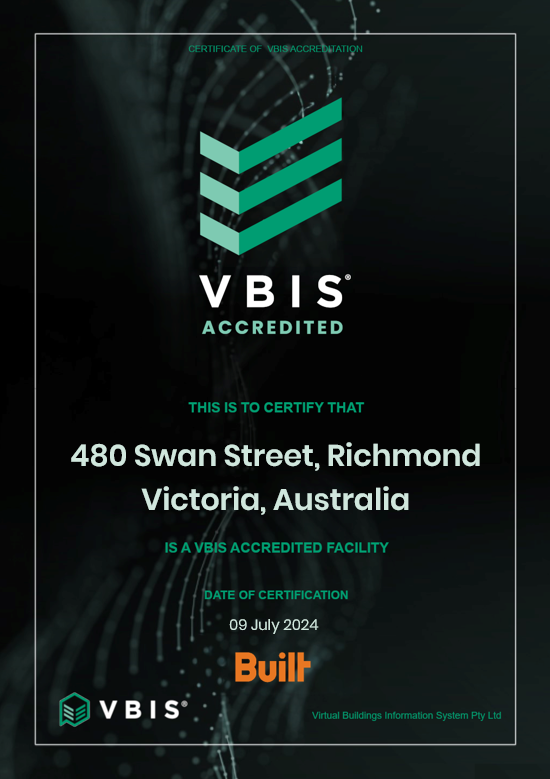Built 480 Swan Street Richmond Case Study - VBIS Accreditation
Background:
Proudly 100% Australian-owned, Built are a national diversified contractor of Australia’s most significant construction projects. For over 25 years, Built has applied expertise and technology to solve problems upstream with clients to deliver quality with certainty. They pioneer new ways to build more efficiently, through long-term investment into digitisation and supply chain optimisation to accelerate processes and take Australia forward.
To advance the industry, Built have developed a toolkit to help improve functionality, cost control, and buildability on complex projects and multi-sites.
Challenge:
Forging a new way forward with Digital Engineering presents unique opportunities to collaborate with diverse stakeholders and integrate various workflows, each at different levels of maturity. While digital technologies such as Building Information Modelling (BIM) have gained widespread adoption in complex construction projects, ensuring consistent and accurate data input remains a challenge. Achieving data consistency is crucial for managing and updating large volumes of complex and dynamic data throughout the building lifecycle, as it addresses significant logistical and coordination challenges for all stakeholders.
Opportunity:
Built understands that data consistency should start at the beginning of a building’s lifecycle. This approach offers the greatest opportunity to leverage asset data captured during construction for ongoing operational use, as demonstrated at 480 Swan Street, Richmond.
480 Swan Street, Richmond is a 12 storey, 32,000 square metre (sqm), A-grade commercial office constructed by Built for asset owner Charter Hall and anchor tenant Australia Post. The innovative new workplace employs cutting-edge digital engineering technology within a carbon-neutral framework, achieving a 6-star Green Star rating. To achieve key technology and sustainability goals, Built worked with VBIS to ensure consistent and accurate data classification is applied to the Building Information Model across the project. This level of consistency will support the ongoing management of the facility, establishing a golden thread of asset data that captures information throughout the build process. This approach minimises data waste and unlocks additional opportunities for clients.
“Through our digitally-led approach at Built, we strive to ensure that the models and data we are providing to our clients post-project allow for smooth transition of asset information. The VBIS standards enable us to transition from design to construction to maintenance seamlessly. The VBIS Accreditation is an acknowledgement of the teams hard work to deliver to the highest standard”
Why VBIS.
The Virtual Buildings Information System (VBIS) standard, backed by Government, is easy to understand and adopt. The 4 level structure provides consistency for all maintainable assets within the built environment. Virtual Buildings Information System have also been able provide training and support during the adoption process to help improve the overall maturity of the industry.
VBIS has also helped to provide data quality assurance by reviewing and certifying the data classification with the model ultimately providing the model used at 480 Swan Street, Richmond with a VBIS accreditation via VBIS Accredited.
“Built are leading the way to pass design and as-built asset information to operators using the VBIS classification standard”
480 Swan Street, Richmond project has achieved VBIS Accredited status. This means that the BIM data set has been configured and achieves the VBIS Standard which is vital step in achieving data confidence and integrity in the industry.
If you would an advantage in the industry, then look at VBIS Accreditation for your project.
To find out more about Built’s Innovations, see the following below:
· Dismantling the smoke and mirrors around Digital Engineering - Built


